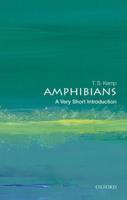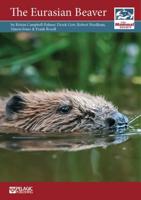Publisher's Synopsis
Leopard geckos (Eublepharis macularius) are one of the most popular reptile species kept as pets, prized for their docile nature, hardy constitution, and striking appearance. Native to arid regions of South Asia, these geckos have adapted to survive in harsh desert environments, making them well-suited for captive care. Their ease of maintenance, combined with their wide variety of color morphs, has contributed to their popularity among beginner and experienced reptile keepers alike.
Despite their widespread presence in the pet trade, leopard geckos remain fascinating creatures with unique behaviors and physiological adaptations that set them apart from other gecko species. Unlike many geckos that possess sticky toe pads for climbing, leopard geckos have clawed feet and are primarily terrestrial, relying on their strong legs and keen senses for movement and hunting. Additionally, they are one of the few geckos with fully functional eyelids, allowing them to blink and clean their eyes, a trait uncommon among their relatives.
This guide provides an in-depth look at leopard geckos, exploring their natural habitat, behaviors, care requirements, and significance in the pet trade. Whether you are a new owner or a reptile enthusiast, understanding the natural history and needs of these geckos is essential for providing them with a healthy, fulfilling life in captivity.
Overview of Leopard GeckosLeopard geckos belong to the family Eublepharidae, a group of geckos distinguished by their movable eyelids. The species Eublepharis macularius has been studied extensively due to its widespread availability in captivity and unique traits. Their name, "leopard gecko," derives from the distinct spotted pattern on their bodies, resembling the markings of a leopard. However, selective breeding in captivity has led to a vast array of morphs, ranging from solid colors to intricate patterns with little resemblance to their wild counterparts.
These geckos are relatively small, typically reaching lengths of 7-10 inches (18-25 cm) when fully grown. Males tend to be slightly larger and bulkier than females. Their lifespan in captivity is impressive, with many individuals living between 15-20 years, and some exceeding 25 years with proper care. This longevity makes them a long-term commitment for reptile keepers.
Key Physical Features- Eyelids: Unlike most geckos, leopard geckos have fully functional eyelids, allowing them to blink and remove debris from their eyes.
- Clawed Toes: Instead of adhesive toe pads, they have clawed toes, making them adept at walking on rough surfaces rather than climbing smooth vertical surfaces.
- Tail Regeneration: Leopard geckos can drop their tails (autotomy) as a defense mechanism against predators. While the tail regrows, it is often shorter and differently shaped than the original.
- Fat-Storing Tail: The tail serves as a fat reserve, allowing the gecko to survive periods of food scarcity in the wild. In captivity, a plump tail is often a sign of good health.
- Color Morphs: Wild-type leopard geckos display yellowish bodies with dark spots, but captive breeding has resulted in morphs that include albino, melanistic, striped, and patternless variations.
Leopard geckos are crepuscular, meaning they are most active during dawn and dusk. Unlike many nocturnal geckos, they have a well-developed sense of vision that allows them to navigate and hunt in low-light conditions. Their diet primarily consists of insects, which they hunt using a combination of stealth and quick strikes.
Their gentle disposition and relatively simple care requirements make them ideal for beginner reptile keepers. However, they still require proper care, including appropriate heating, diet, and habitat maintenance, to thrive in captivity.









